Learn How To Fly With Flight Simulator – A Beginner’s Guide to Soaring the Virtual Skies as a Pilot:

Embarking upon this journey of learning how to fly with flight simulator can be as enjoyable as it is enlightening. This inclusive guide will take you through what you need to know about flying on a simulator, including the basic set up and some initial tips that will help ensure you get the most from your flight simulation experience. If you are an aviation enthusiast or aspiring pilot, this guide is just right for you.
Introduction to Flight Simulation:

Flight simulation provides a practical, safe and economical way of acquiring the basics of flying. By simulating real flying experiences, users can test different maneuvering techniques, understand aircraft systems, and familiarize themselves with various weather conditions without leaving their seats.
Choosing the Right Flight Simulator:
There are several flight simulators but most preferred by both beginners and professionals include Microsoft Flight Simulator X-Plane; Prepar3D among others. Each simulator has its own strengths: Microsoft Flight Simulator has excellent graphics while X-Plane boasts of realistic flight physics; on top of that Prepar3D comes with educational tools.
Hardware and Software Setup:
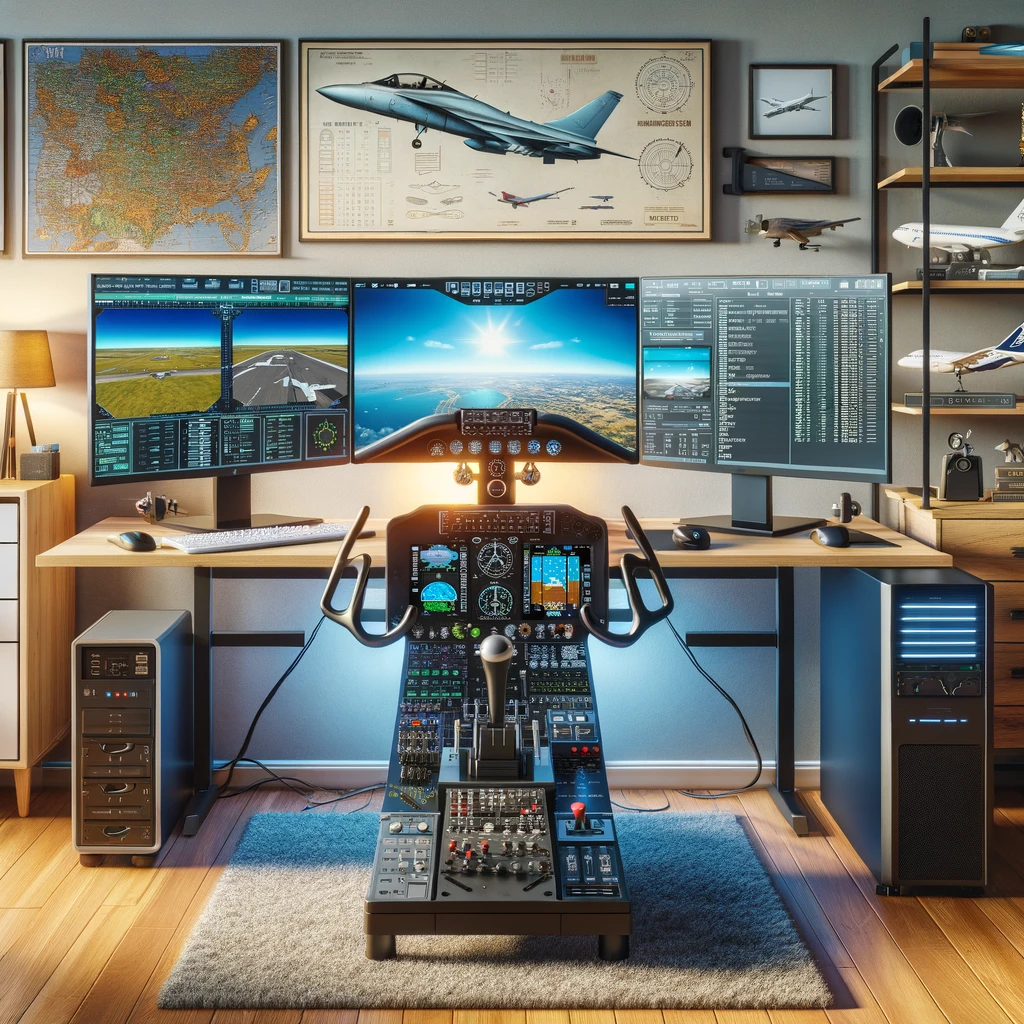
Hardware Requirements: To run your flight simulator smoothly, you need a powerful PC. Although requirements may vary depending on the simulator in question, a good starting point might be a quad-core processor coupled with 16GB RAM and a graphic card having at least 4GB VRAM.
Software Installation: Once you have chosen your simulator follow instructions from the manufacturer on how to install it. In some cases this might mean downloading it from online stores or using physical media.
Flight Controls: You could start out with just one keyboard and mouse combo but getting yourself either joystick or yoke plus rudder pedals would make your experience even better since such controls give actual feelings of manipulating an airplane.
Setting Up Your First Flight:
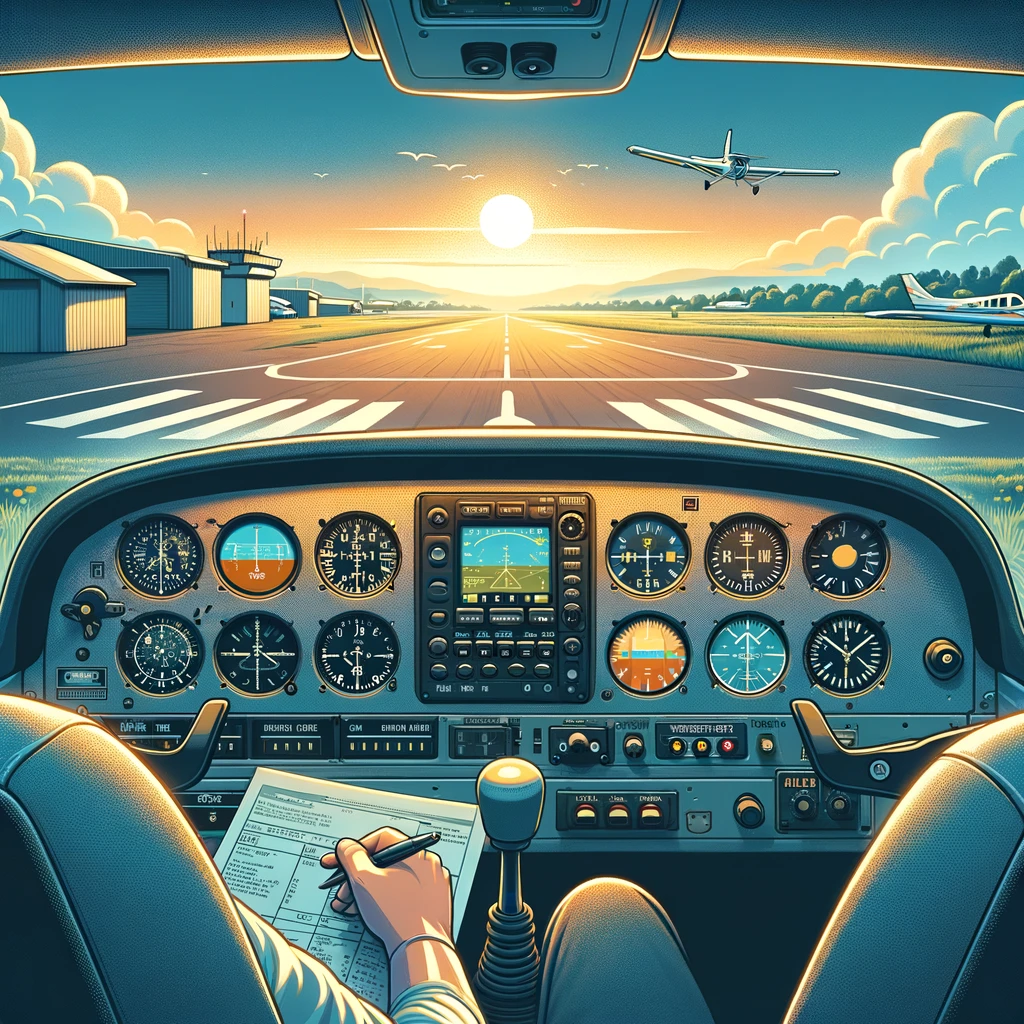
Selecting an Aircraft: Start simple. For beginners, a single-engine propeller aircraft such as a Cessna 172 is ideal because this aircraft type has certain forgiving flight characteristics.
Choosing a Location: Start with small airports. Smaller airports have less traffic and fewer complicated layouts which makes it easier to learn the basics of taking off, flying, and landing.
Understanding Basic Controls: Familiarize yourself with the primary controls such as the yoke or joystick for pitch (up and down) and roll (left and right), throttle for speed, and rudder pedals for yaw (turning the aircraft on its vertical axis).
Flight Simulator Basics:
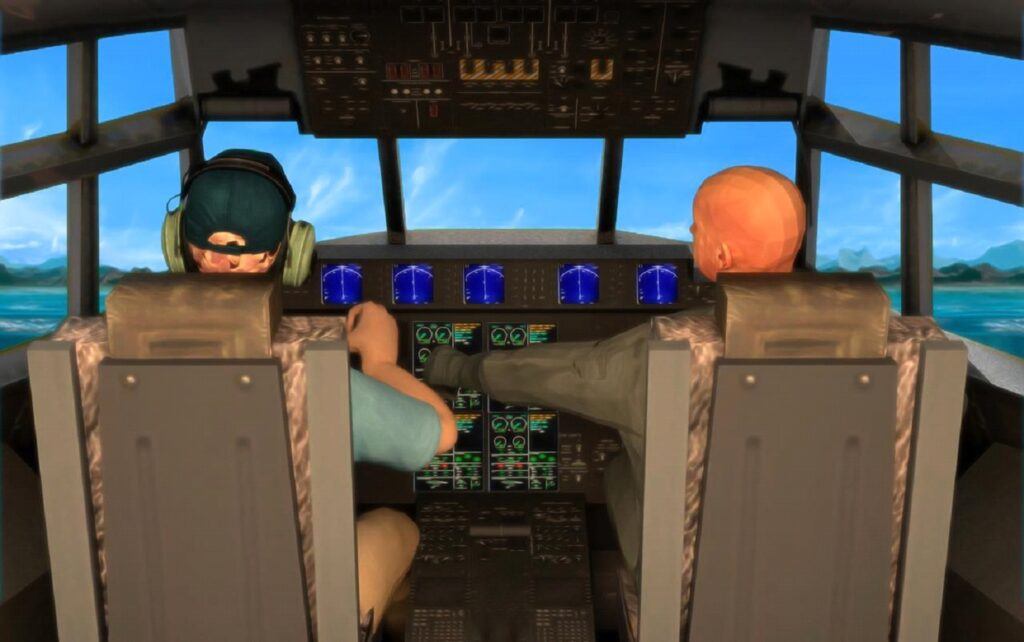
Pre-Flight Checklist: Before you take off in any flight scenario just like real pilots do, perform your pre-flight checklist to ensure that your plane is ready to fly. This includes checking fuel levels, engine instruments, and control surfaces.
Taking Off: Learn how to manage your throttle by accelerating before gently pulling back on your yoke or joystick. Climb at a constant rate while maintaining recommended simulator speed.
Basic Maneuvers: Practice turning left/right as well climbing/descending in order to learn about basic flight. Knowing how to maneuver your plane through these elementary maneuvers is significant.
Landing: Of all aspects of flying this might be hardest one. Ensure that you approach the runway at the correct angle and speed; then gradually reduce both altitude and speed during descent until final touch down becomes smooth.
Tips for getting started:
- Start Simple: The process of learning how to fly in a simulator is best started slow and easy aircraft with straightforward weather situations. Learn the basics first and then slowly introduce more complicated concepts as you grow your confidence.
- Utilize Tutorials and Missions: Many simulators include teaching missions or tutorials that are meant to explain the fundamentals of flight. These can be quite helpful for new pilots.
- Practice Regularly: Just like with any other skill, becoming proficient at flying requires practice. Regular sessions will make you feel comfortable; this will help improve your flying abilities.
- Join a Community: Online forums, blogs, and social media groups offer a wealth of information on advice, tips, and experiences from fellow virtual pilots.
- Learn from Mistakes: Every unsuccessful takeoff, bumpy landing or navigation error is an opportunity to learn. Use these incidents to become better at piloting.
Beyond the Basics:
After mastering the foundational skills, flight simulation opens up into another world. You can fly advanced airplanes, navigate challenging weather conditions, join virtual air traffic networks and even recreate real-life flights.
Exploring Advanced Flight Concepts:

Once you have grasped basic flight maneuvers comfortably start exploring advanced ideas. IFR (Instrument Flight Rules) flying involves using instruments and flight navigation systems instead of visual references for navigating between destinations. Knowing IFR procedures enables one to fly regardless of weather conditions or time constraints while also introducing one to new talents such as reading charts or understanding ATC communication facilities.
Simulation Realism plus Add-ons:

A lot of simulators let users adjust settings for more realism plus add-ons that are available out there in plenty. Some realistic features can be dialed up so that we have accurate physics during flights , realistic weather patterns besides system failures may also be simulated thus enhancing emergency response training . It is worth noting that this community surrounding simulators has come up with multiple add-ons including detailed aircraft modules combined with faithful flight decks , realistic landscapes and virtual air traffic control (ATC) systems among others. These add-ons not only create more visually attractive simulations, but also provide players with a sense of depth that can enhance their immersion into the game.
Joining Virtual Airlines and Flying Clubs:
![]()
Community is one of the most interesting things about flight simulation. Joining virtual airlines or flying clubs can greatly improve your experience. Virtual airlines have schedules, fleets and pilot hours to track similar to real-world counterparts. In some cases they run their operations almost exactly like real world airlines thereby giving them a chance of exploring what it’s like being a pilot for an airline by strictly following schedules, operating specific flights among many other ATC interactions.
On the other hand, flying clubs are more focused on recreational flying activities such as group flights, training sessions and social events. They are great places for learning since new pilots often receive guidance from veterans who share advice, techniques and knowledge about aviation.
Advanced Simulation Equipment:
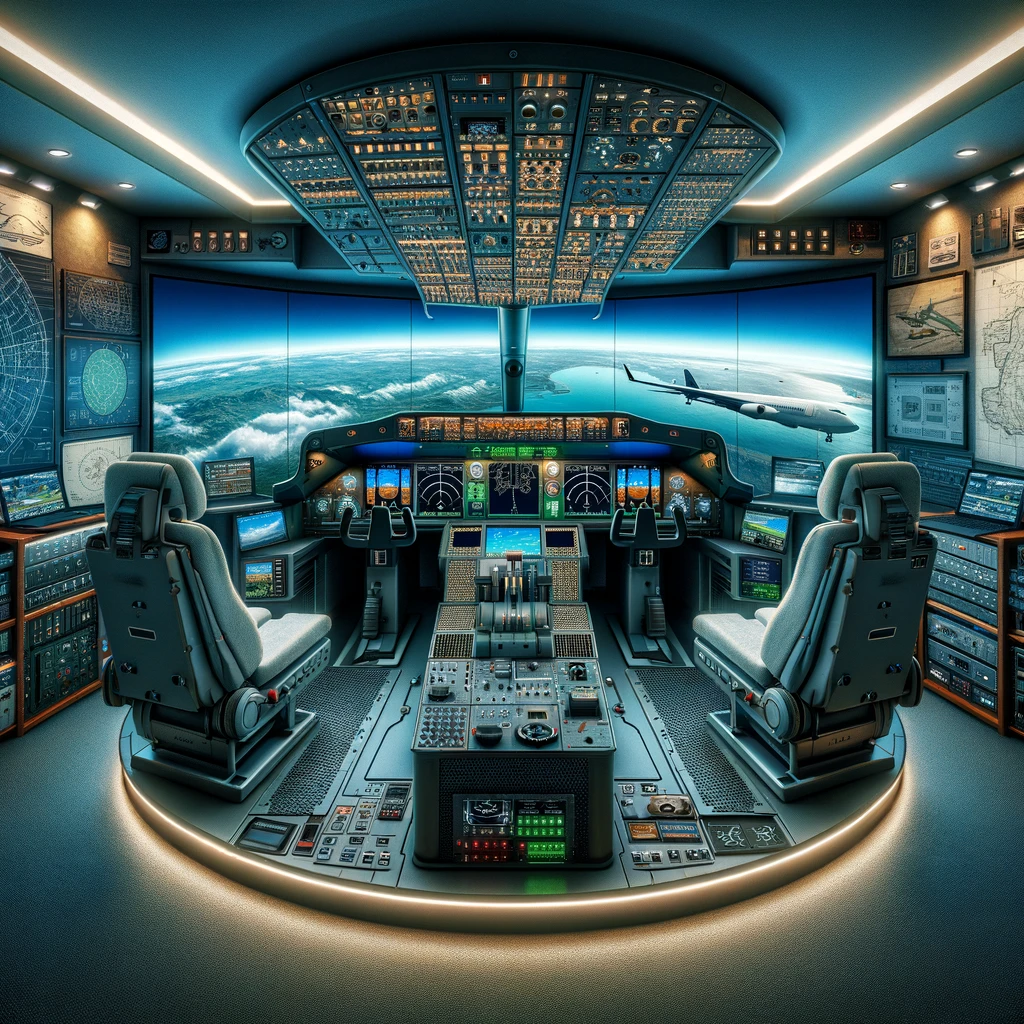
As you become more skilled in your use of simulators you may wish to upgrade your setup even further. More advanced equipment like multiple monitors setups; head tracking devices or even complete cockpit replicas will greatly increase the immersion and realism of your simulation experience. While these purchases are not required in order to enjoy flight simulation, they do bring another level of excitement and reality for those who are deeply invested in this hobby.
Continuous Learning and Improvement:
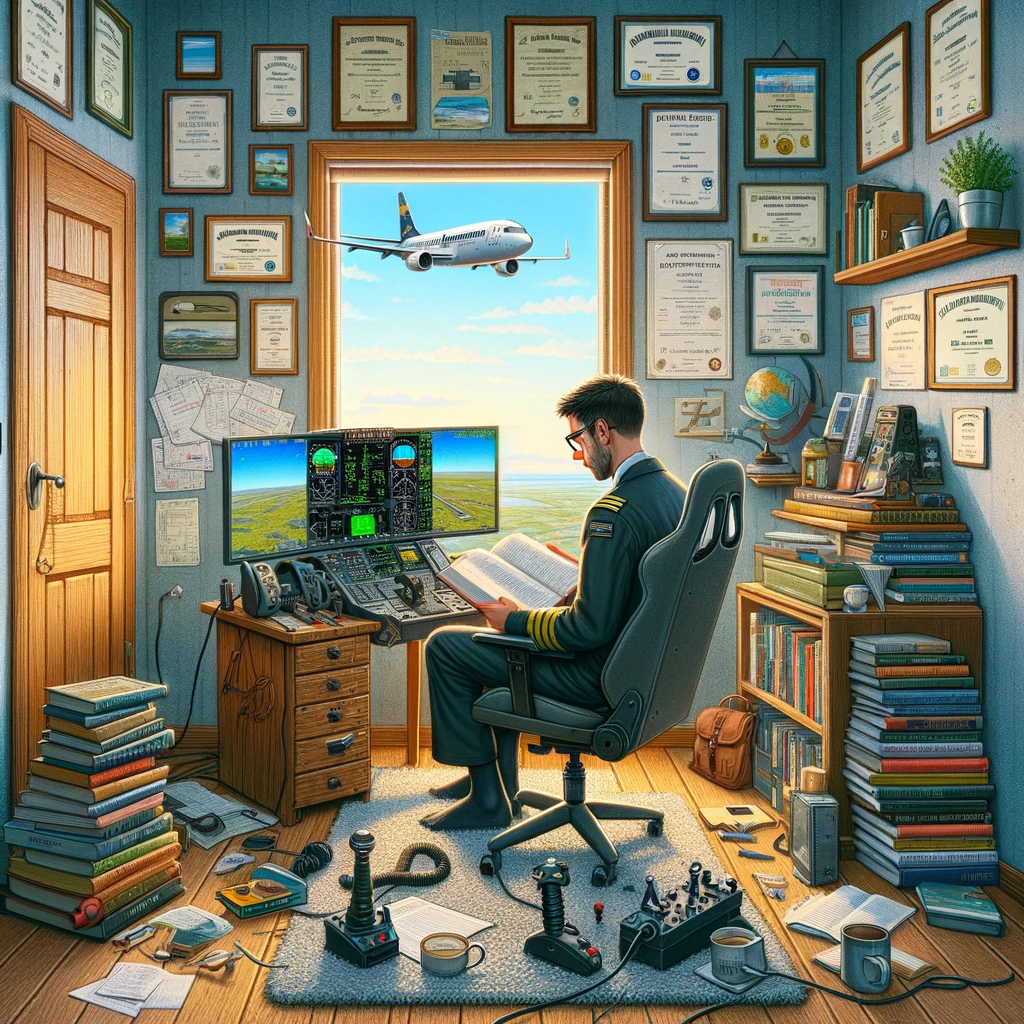
Aviation field is expansive, with something new to learn about such as different kind of aircrafts, advanced routing, weather systems complexities. Flight simulation is a powerful teaching tool and means for skill development. Many pilots enjoy using simulators in various tasks like rehearsing procedures, getting acquainted with new airports or just keeping one’s skills up.
Making use of the manifold online resources including tutorials, forums and videos can enable you to continuously improve your knowledge and skills. Moreover, write down what you learned from each flight experience in a logbook and areas needed for improvement. In this way not only will your progress be recorded but you will also have goals for your next flights.
The Journey Ahead:

Deep into flight simulation you will find that the journey is as rewarding as the end game. Every flight offers a fresh opportunity to try something new, challenge yourself and grasp more about the beauty associated with flying’s intricacies. Whether it is navigating through New York City’s crowded airspace, nailing a landing amidst harsh weather conditions or simply undertaking a scenic flight over the Alps; flight simulation gives unlimited room for exploration and education.

This sounds very interesting a also a lot of fun – albeit with a serious side.
I guess this would be very useful additional training and skill development for someone who actually wanted to go through pilot training to actually fly for real.
A simulator can never replace real hands on experience inside the cockpit, but it’s great to see that budding pilots can now do their simulator training from the comfort of their own home and, in so doing, save themselves an awful lot of expense.
Which aircraft types can be simulated on this package? Is there a package for military aircraft?
Aircraft types are Boeings, Cessna, Beechcraft, Mcdonnell Douglas DC 3, Piperjet and a lot more. Yes there is Military jet F/A -18 in Flight Simulator X program. Of course Flight Simulator can advance your skill but it is not replacement for flight school.
I can imagine that this is a lot of fun to play with and that you would build some great practical knowledge of the console controls through a bit of study and repetition. What a great way to also gain the basics in flight, especially if you were planning to do lessons for real. It can be so expensive to learn to fly and I think this simulator is an amazing practice simulator. I’m sure budding pilots will gain confidence by playing this game and even better you can do it at home.
Thanks for visiting my website and thanks for the nice comment.
Good to know there is an opportunity for the newbie potential pilots to learn and acquire new skills from here! What an interesting and helpful innovation! Certainly, the budding pilots will, of course, learn more skills while studying from the comfort of their homes! Even though a simulator isn’t as effective as real hands in the cockpit, it at least makes it possible for budding pilots to stay Indoors and learn all the skills at home.
Thanks for the feedback.
Hello there! This is an informative post. I was a huge gamer back in the day (maybe 7 years ago), not so much these days. But now that I am at home more, I have been looking to get back into some gaming just to keep me from getting bored. I haven’t thought of trying out flight simulation games before. Seeing some of the images on your post, it looks really complicated. Glad to hear that the Flight Simulator program has a flight lesson tutorial. Otherwise I can confidently say I would crash my plane. Definitely not a good start for becoming a pilot. Thanks for creating this post!
You are welcome. I have to take a screenshot of the game and edit it using paint program and then post it in my website.
Thanks for sharing a great article to learn more about how to fly with flight simulator, I never thought this could be possible, but it sounds like a great fun, I always wonder how pilots manage to fly planes and this could help me to learn a little about it, as it sounds interesting and fun, I might give it a try.
Thanks for the feedback. Pilot manage to fly planes by following the training on Flight Simulator lessons before flying an actual aircraft.
Hello MElamin,
I can feel deeply now that learning how to fly a plane is not easy. You can’t just jump in and start flying. In order to be a pilot, you need to have a lot of training and experience. That’s why it’s so important that people have the opportunity to learn how to fly with flight simulator.
Flight simulation are a great way for people who want to become pilots but don’t have the time or money for training, or who live in areas where there aren’t any flight schools, the opportunity to learn how to fly without putting themselves at risk of crashing an actual airplane.
I’m so grateful that am not pilot. lol.
Have great weekend.